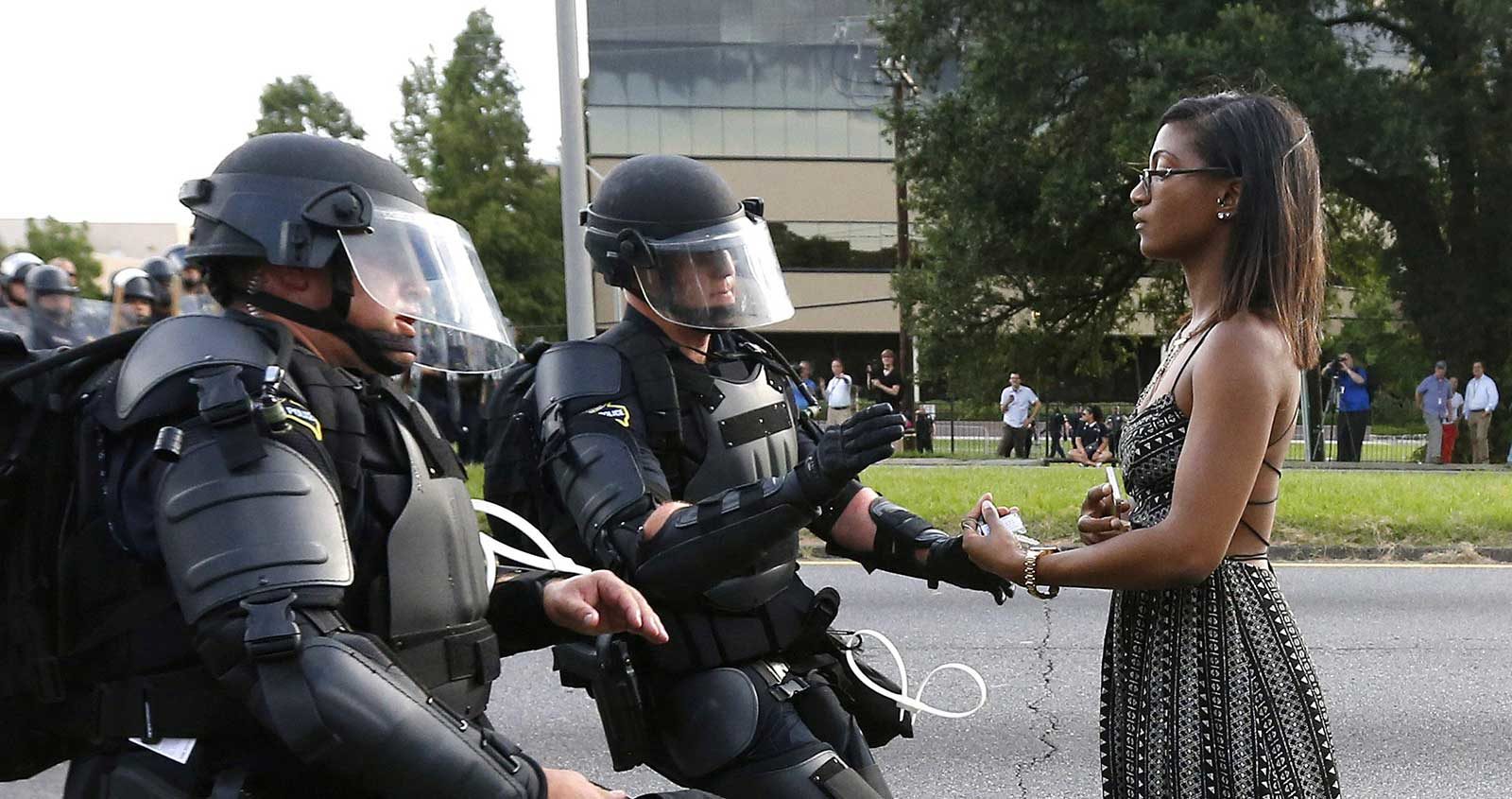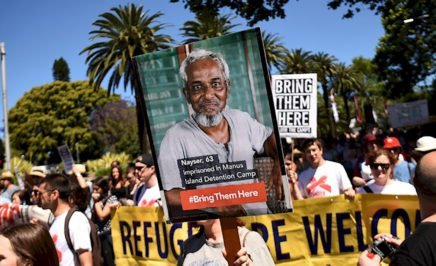As someone who wouldn’t have called herself an activist before last year, Kate Taylor never imagined she would be rallying 10,000 protesters to march for women’s rights on Donald Trump’s inauguration day in January.
The law student first heard about the Women’s March on Washington through a friend who was working in the US. Inspired by the movement and angered by Trump’s sexist rhetoric, Kate decided to organise a sister march in Sydney. “When I started the Facebook page, I thought I’d get 50 people signing up,” she told Amnesty.
Before long, she was contacted by US expats Rebecca Turnbow and Mindy Freiband — who co-founded their own solidarity event in Sydney and invited her to join forces. From that, the core team of Sydney Women’s March was born.
‘Social media helped us find each other’
Digital activism is often dismissed by cynics as a lazy alternative to traditional, blood-and-sweat protests. But recent movements, like the worldwide Women’s March, have proven the effectiveness of a well-organised, digital-first campaign.
Kate, one of the organisers from @womensmarchsyd #WomensMarchSydney #WomensMarch pic.twitter.com/1SXZWivPHC
— Emmeline Spankhurts (@mm_ssssshh) January 21, 2017
“Social media helped us find each other,” says Kate, “It’s incredible to suddenly have access to a brains trust of thousands of women all trying to work towards similar goals.”
For Kate and her team, what started as an online push soon “mushroomed” into a well-oiled organisation run by over 70 volunteers. Having successfully staged one of the biggest mass protests in Sydney, the group now uses its social media network to organise large-scale feminist events, including the March in the Park on 29 April, which aims to promote bodily autonomy and women’s health and safety.
“Our social media reach helps us identify people who are like-minded,” says Kate, “It’s about taking that anger, concern and unrest and turning it into positive action.”
‘Democracy is a slow and lumbering beast’
“One thing that the internet has done is condensing time, space and identity,” says Dr Max Halupka of the Institute for Governance and Policy Analysis, University of Canberra.
In other words, technology has allowed more people to add their voices to social causes with much greater ease and urgency. Halupka calls this ‘connective action’ — the social shares, retweets, and storytelling that put difficult issues back in the public consciousness, ultimately challenging the broader political narrative.
“Democracy is a slow and lumbering beast,” says Dr Halupka, “But technology speeds the process along by opening up ways in which people can engage in politics”
Dr Max Halupka
Examples of this include shining a light on racial injustices using the hashtags #Ferguson and #BlackLivesMatter, exposing the cruelty of Trump’s #MuslimBan, acknowledging Indigenous Australian dispossession with #ChangeTheDate, and sharing stories of everyday racism under #FreedomOfSpeech — a movement that contributed to the Senate rejecting potentially damaging changes to Section 18C of the Racial Discrimination Act.
“Democracy is a slow and lumbering beast,” says Dr Halupka, “But technology speeds the process along by opening up ways in which people can engage in politics.”
“People argue these new forms of activism don’t do anything — perhaps in a vacuum they don’t. But when taken together, they are cogs in a larger participatory machine. They help galvanise and create narratives.”
Beyond the feel-good click
So how exactly do we harness the power of our voices online? Change.org Director Nathan Elvery thinks it’s all about knowing when to turn those social moments into specific actions.
“Hashtags are a great way to capture a mood…But what’s critical for tangible change is to capture those moments and transform them into ongoing action — and petitions are a useful tool to do this.”
Nearly 4.4 million people now use change.org to start online petitions, and a victory is declared every 48 hours.
But despite its popularity, there’s a misconception that signing a petition, like sharing a social post, is little more than a feel-good gesture. What sceptics don’t realise, says Elvery, is that a petition is only the first step in a long and often complex political battle.
Elvery cites Catholic priest Paul Kelly’s push to abolish the ‘gay panic’ murder defence in Queensland, which was used by people accused of murder to downgrade their conviction to manslaughter, due to an unwanted sexual advance.
The petition collected 290,000 signatures on change.org and was finally won last month, after a five-year campaign — a result that wouldn’t have been possible without large-scale online support.
When a signature saves lives
In countries where the local media is suppressed, online actions are crucial to protecting someone who is at immediate threat of bodily harm.
“For someone at risk of torture, the fact that authorities in that country know that 100,000 people around the world are aware of it and are watching them makes a difference,” says Amnesty International Australia Activism Manager, Chris Holley.
“It’s really important, at this point in time in particular, that people defend the idea of human rights — it says we’re not going to allow fear to turn us inwards”
Chris Holley
Through organisations like Amnesty International, technology affords us an opportunity to campaign for the clemency of death row prisoners, demand an end to the inhumane treatment of refugees like Loghman Sawari — all with the click of a button.
“We don’t see online and offline as being completely separate things. And people often do both,” says Holley. Together with the research and groundwork done by advocacy staff, any signatures given or emails sent then become part of a larger lobbying effort.
Given the rise of the populist movement in the western world, Holley thinks it’s more important than ever to stay engaged. “It’s really important, at this point in time in particular, that people defend the idea of human rights — it says we’re not going to allow fear to turn us inwards.”
And if recent wins like The Women’s March have shown us anything thing, it’s that there is no better time for resistance than now.




